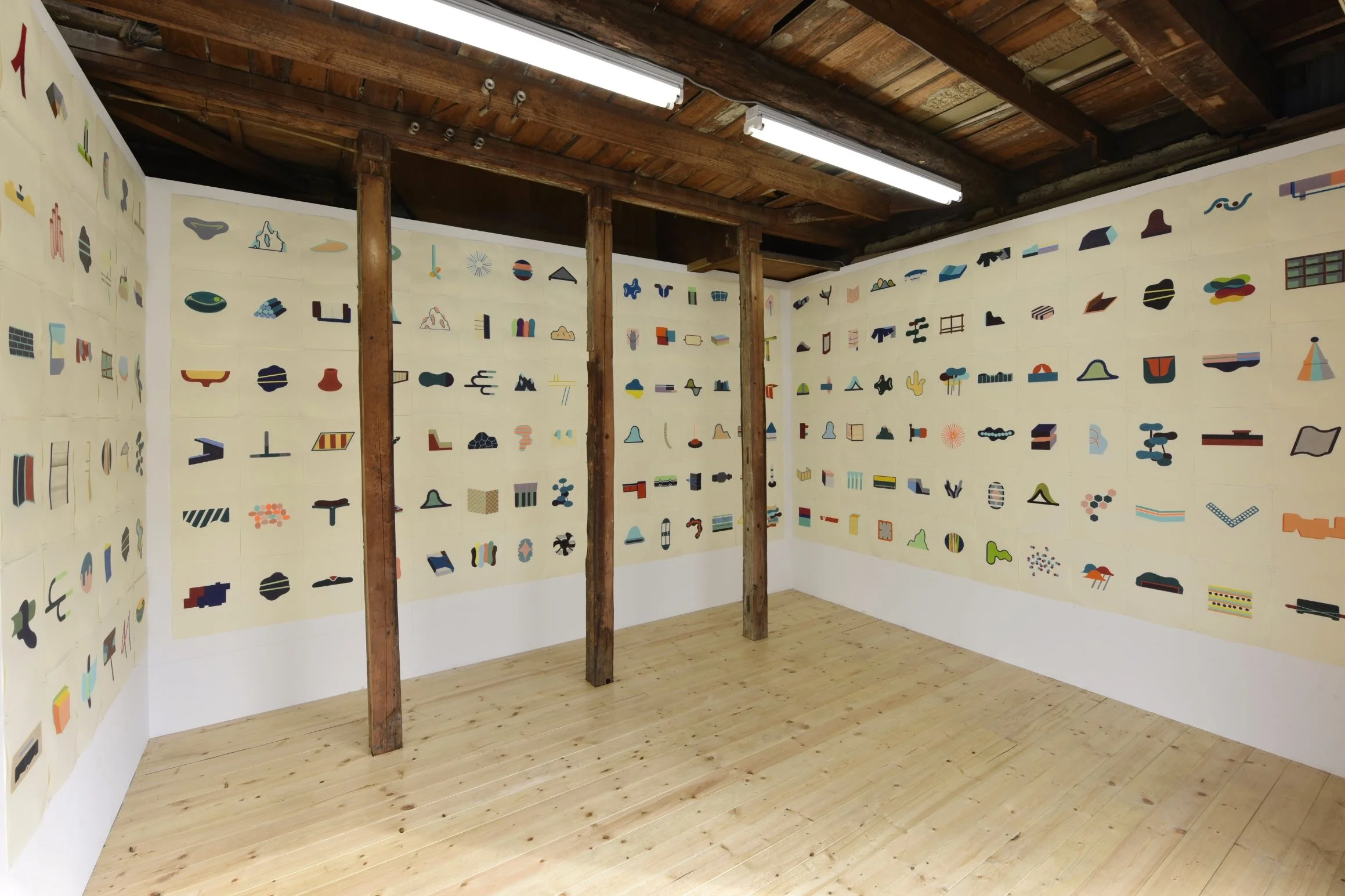archegraph ( 2015 - ongoing )
This drawing series abstracts the forms of “residues” discovered through observations of urban environments, extracting unique symbolic images through the act of drawing. I have named these images “archegraphs”, and since 2015, I have been developing this practice in various cities, mainly across East Asia and Europe.I regard the forms of urban “residues” — those generated through the interference among the metabolism of contemporary mass-consumption cities, natural processes such as weathering, and the consumer activities of urban dwellers — as representations of the urban unconscious. By abstracting these forms through drawing, I construct my own visual language that translates the latent structures of the city into symbolic expression.
In the urban environment, “residues” refer to things such as trash left on the streets, stains on walls created by weathering, torn posters, or materials carelessly abandoned in the narrow gaps between houses and roads. They are objects and forms that have been excluded from contemporary consumer life—things once used, worn down over time, and gradually transformed. Originally serving certain functions within urban life, these elements eventually become subject to exclusion. Exposed to various external pressures within the urban environment, they erode, weather, and ultimately are discarded as unnecessary matter—waste. Throughout this process of exclusion, the shapes of these urban residues gradually take on organic characteristics, remaining in the city as intermediaries between the natural and the artificial.By creating drawings based on these forms of urban residue, I attempt to translate, through my own visual language, the latent realm of images mediated by the “urban unconscious” —a space situated between nature and the artificial.
archegraph_Tainan ( 2018 )
>> Observation Photos
このドローイングのシリーズは、都市環境の観察を通じて発見した都市における「残余」のカタチをドローイングを通じて抽象化し、独自に記号的なイメージを抽出していくというものである。これらのイメージを「アーキグラフ」(archegraph)と名付け、2015年からこれまでに東アジアやヨーロッパを主とした様々な都市で実践してきた。
現代の大量消費社会における都市のメタボリズム、風化などの自然作用、都市生活者の消費活動、それらの干渉によって偶発的に生み出されていく都市の「残余」のカタチを「都市における無意識」の表象と捉え、それらをドローイングを通じて抽象化していくことで、独自の造形言語を作り上げていく。
都市における「残余」とは、例えば路上に放置されたゴミ、風化によって作り出された壁のシミ、破れたポスター、住宅と道路の隙間に無造作に放置された資材など、現代の消費生活のなかで排除されていく対象、あるいは時間と共に使い古されて、変化していくモノや、そのカタチである。もともと都市における住民の生活の中でなにかしらの機能を担っていたそれらの要素は、ある時点で排除の対象となり、都市環境の中のあらゆる外的な抑圧にさらされる中で、摩耗、あるいは風化し、最後には不要なモノ(ゴミ)として排除されていく。そういった排除の過程の中で、都市の残余物の形状は徐々に有機的な形態を纏い、自然と人工物の中間体として都市に残留していく。そのような都市の残余のカタチをもとにドローイングを行うことで、「自然」と「人工」の間、あるいは「都市の無意識」を媒体とする潜在的なイメージの領域を独自の造形言語を用いて翻訳していく。
archegraph_Seoul ( 2017 ) SeMA Nanji Residency Exhibition Hall
archegraph_Seoul ( 2017 ) 21cm×28cm (224 piece) color pencil, paper
archegraph_Seoul ( 2017 ) 21cm×28cm (224 piece) color pencil, paper
archegraph_Minato ( 2023 ) Super Gallery, Nagoya
archegraph_Minato ( 2024 ) Aichi Prefectural Museum of Art, Nagoya
archegraph_Minato (2016 ) Assembridge Nagoya 2016




























